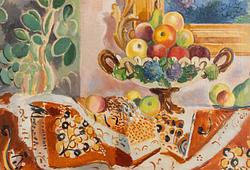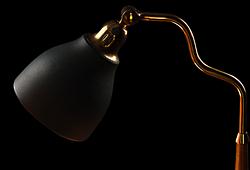Nils von Dardel
"Mexikan"
Signed Dardel. Executed 1940-42. Watercolour 50 x 39 cm.
Provenance
Premier dancer and choreographer Teddy Rhodin (1919 - 2004).
Thence by descent in the family.
Exhibitions
Liljevalchs konsthall and SAK Sveriges Allmänna Konstförening, Stockholm, "Nils Dardel", 23 March - 1 May 1955, cat. no 322 (owned by Teddy Rhodin).
More information
This is the original artwork for one of the motifs in the portfolio "Nils Dardel, Exotic - 16 color plates after watercolors from Mexico and Guatemala. With introductory text by Folke Holmér", Albert Bonniers förlag, Stockholm, 1948.
During the 1930s, Nils Dardel meets the third woman in his life, American Edita Morris, who is married to Ira Morris. Edita stayed in her marriage but began a relationship with Dardel that lasted for several years. During World War II, the couple lived in New York, but Dardel did not enjoy it there, so they traveled to South America, where they stayed for extended periods in Guatemala and Mexico. Dardel was fascinated by the local population and during these stays, he created many watercolor portraits. Shortly thereafter, Dardel passed away in New York due to complications from his long-standing heart condition.
In 1948, Bonniers Förlag published a portfolio titled "Exotic" with 16 color plates after watercolors from Mexico and Guatemala, accompanied by introductory text by Folke Holmér. The portraits were also included as supplements in weekly magazines. These images gained widespread popularity and became beloved in Sweden. After the war, when borders had been closed, people longed for the outside world, and it was as if the world came to Sweden through these images. For many, Dardel's portraits were their first encounter with art and thus became a part of the societal development after World War II, when modern Sweden began to emerge.












































